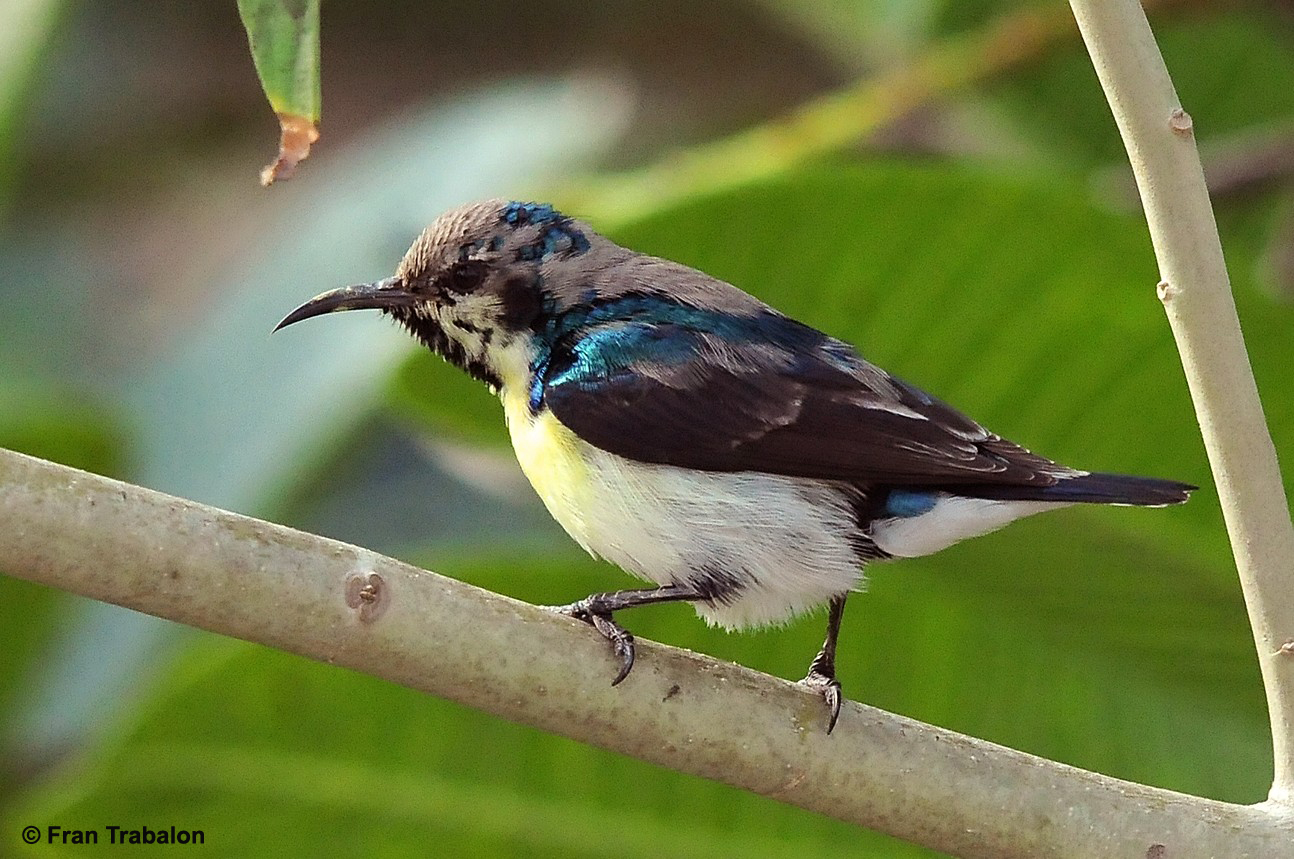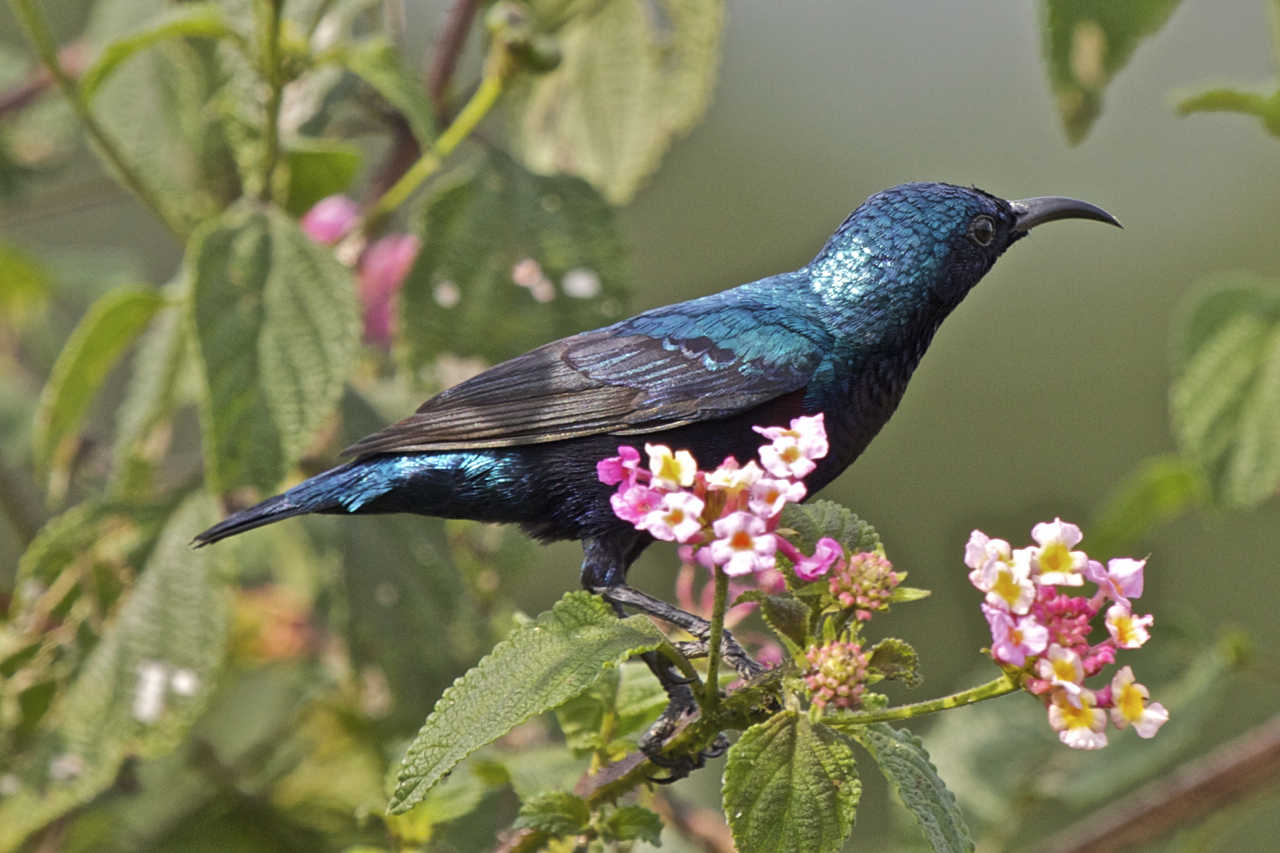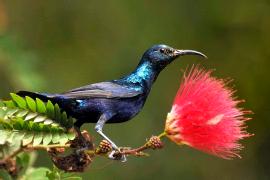
Cinnyris asiaticus
SUBFAMILY
Nectariniinae
TAXONOMY
Certhia asiatica Latham, 1790, Gurgaon, India. Three subspecies.
OTHER COMMON NAMES
French: Souimanga Asiatique; German: Purpurnektarvogel;
Spanish: Nectarina Asiбtica.
PHYSICAL CHARACTERISTICS
4–4.5 in (10.1–11.4 cm); male 0.24–0.39 oz (6.9–11.0 g), female
0.17–0.35 oz (5–10 g). Medium-sized decurved bill. Male all
dark, iridescent during breeding. Female brown and yellow.
DISTRIBUTION
C. a. asiaticus: India south of Himalayas, except northwest and
north, and Sri Lanka; C. a. brevirostris: southeastern Oman,
southern Iran, Baluchistan, and Pakistan, to western India at
Rajasthan and western Gujarat; C. a. intermedius: India in
northern Andhra Pradesh, Orissa, Assam, and Bangladesh to
Indochina and southern Yunnan.
HABITAT
Deciduous forest, thorn-scrub, farmland and gardens up to
7,875 ft (2,400 m) in hills.
BEHAVIOR
Aggressive, active, and noisy. Probes flowers including mistletoes,
and catches insects like a flycatcher. In India migrates
northwards March through April, returning August through
September. Also altitudinal migrant, traveling up after breeding.
Migratory in Oman.
Male displays to female with slightly open wings to expose
pectoral tufts, raises head and flutters while singing excited
“cheewit-cheewit” song.
FEEDING ECOLOGY AND DIET
Mistletoe fruits, nectar, grapes, and small insects.
REPRODUCTIVE BIOLOGY
Clutch of one to three grayish-white, streaked chocolate, eggs
laid in oblong, purse-shaped nest made of grass, fibers, leaves,
and cobwebs. Nest sometimes decorated with caterpillar droppings,
bark, and other debris and is usually suspended. Only female
incubates, but both parents feed young. Parasitized by
plaintive cuckoo (Cacomantis merulinus).
CONSERVATION STATUS
Not threatened.
SIGNIFICANCE TO HUMANS
Has pest status in grape-growing areas of India as it pierces the
fruit and sucks out juices.
Other popular Animals
Photo Gallery of - Purple sunbird




 Animalia Life
Animalia Life